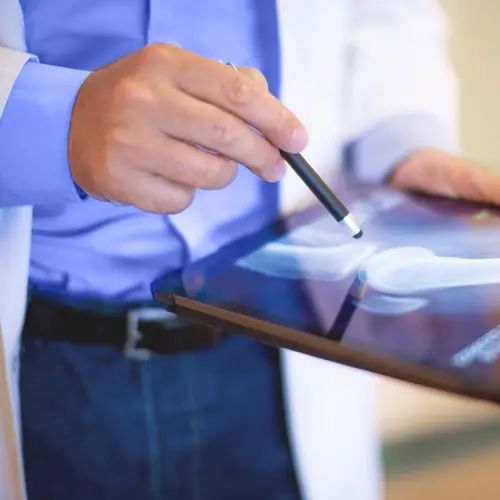When you have rheumatoid arthritis (RA), you expect painful or stiff joints. But did you know RA also can make your bones weaker and more likely to break?
That's because RA raises your risk of getting osteoporosis, a condition that makes your bones porous or not as dense and strong as they should be to hold up your weight. When this happens, even a minor slip or tumble can cause a painful crack or fracture. The bones most likely to break are in your hips, spine, and wrists.
Osteoporosis is very common, especially as you age. People at higher risk include women, particularly after menopause; people with thin frames; smokers; and people who don't get enough calcium or aren't active.
There are reasons RA makes you more likely to get osteoporosis:
- Inflammation: When you have RA, you have inflammation all over your body, especially in your joints. They can swell and break down. That can weaken your bones around the joints affected by RA, like the joints in your hands. Our bodies are always making new bone to replace bone that breaks down. But RA inflammation breaks this cycle. It speeds up your bone loss and slows the making of new bone to replace it. Your bones get weaker, and that leads to osteoporosis. Inflammation also may make it harder for your body to absorb nutrients it needs to keep your bones strong, like calcium or vitamin D.
- Pain makes you inactive: RA can make you feel stiff, achy, or so tired that you don't feel like getting off the couch. Physical activity, like walking, helps keep your bones strong. If you don't exercise, your bones can get weaker over time. If RA keeps you from being active, you're at higher risk for osteoporosis.
- Steroid drugs: Corticosteroid drugs like prednisone (Deltasone) can weaken your bones if you take them for a long time. Some people with RA need to take these medications to help with bad flares of inflammation. The drugs can quickly ease pain and swelling so you can get moving again. But they can make it harder for your body to absorb calcium and vitamin D in your diet. These nutrients help you build strong bones. Your osteoporosis risk is even higher if you're a woman past menopause and have taken steroids for 6 months or more.
Helpful Tips
If you have RA, you can do things to help protect your bones:
Get inflammation under control. RA drugs like methotrexate and tumor necrosis factor (TNF) inhibitors, such as adalimumab (Humira), adalimumab-atto (Amgevita), a biosimilar to Humira, etanercept (Enbrel), etanercept-szzs (Ereizi), a biosimilar to Enbrel, infliximab (Remicade), or infliximab-dyyb (Inflectra), a biosimilar to Remicade, can stop inflammation and reduce your risk of a fracture. TNF inhibitors may even protect you from this damage.
Eat and drink for stronger bones. Get more calcium and vitamin D in your diet to keep bones healthy. Enjoy low-fat dairy products or dark, leafy green veggies to get calcium from natural sources. Get vitamin D in egg yolks, ocean fish, and liver. You may need calcium or vitamin D supplements.
Stay active. Exercise helps you develop flexible joints, stronger muscles, and better balance with RA. It also can help you protect your bones from osteoporosis because it builds bone mass. The best activities for this are walking, dancing, climbing, or strength training. Even light exercise, like a short walk, can make your joints feel looser and keep your bones strong.
Don't smoke or drink too much. Smoking raises your risk of osteoporosis. It also can cause women to go through menopause and start losing bone mass earlier in life. So if you smoke, quit now.
Drinking too much also can make you more likely to lose bone or even to slip and fall.
Get bone tests. See your doctor regularly to test for signs of osteoporosis. Some people don't know they have it until they have a painful fracture. A bone-density test can tell you if your bones are starting to weaken (osteopenia). This test uses X-rays to see how much calcium and other bone minerals are in your bones. Your spine, hips, and forearms are the most common areas tested. If you take certain drugs for RA, like steroids, this test can show bone problems early so you can make changes to keep it from getting worse.
Ask your doctor about bone-preserving drugs. Medications called bisphosphonates can help stop your bones from breaking down. These include zoledronate (Reclast) and fosamax (alendronate). You'll need to take these for a long time, so talk to your doctor to see if they're right for you.
Avoid accidents. If you have RA and are at risk for osteoporosis, take extra care not to slip or fall. Physical and occupational therapists can show you safer ways to do daily tasks and how to safely exercise. Yoga, tai chi, or low-impact aerobics may help you stay fit and improve your balance.

